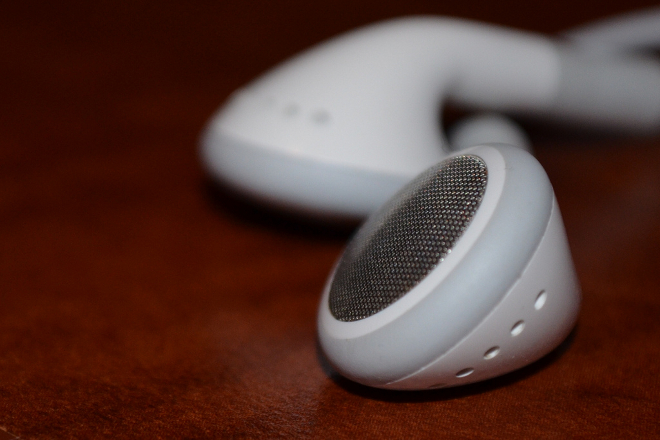“It can’t be a concert setting – it seems too much like rock music. And at a club? Make sure it’s one without bottle service, so you know it’s a ‘real’ venue. And the DJ isn’t supposed to be visible. In fact, you don’t even want to know who the DJ is or if he’s even there. And if you see lights, you know it’s way too mainstream.”
It seems that as dance music’s popularity continues to grow, the restrictions on the proper way to perform it and listen to it become more restrictive. You’ll likely hear – and see on Twitter – someone saying that festivals aren’t the proper place to listen to electronic music. Someone might also say that you can’t just go to a club – you have to try to find a warehouse party. And it must be a “rave” where only downtempo music is played, because otherwise it destroys the atmosphere.
Unlike other genres, several factors intersect in the dance music experience. The beats and melodies only compose part of it; the atmosphere further plays a certain part. That’s why, for every piece you read about acid house, it’s less about the music a group like 808 State created and more about the atmosphere – of London clubs, large parties spread by word of mouth, and a culture in which the DJ turned into a name.
Yet, electronic music’s history, rather than being a progression from underground clubs and warehouse parties to mega festivals like Electric Daisy Carnival, is frankly kind of scattered and dependant on current knowledge. The club experience played a major force from the days of disco, but the ‘80s witnessed artists with their synthesizers emulate these sounds and put them in a modern context; as such, you’ve got an act like New Order that can perform well in concert and then makes a track that works just as well on the dance floor.
But the performance aspect of electronic music has always been an issue. Early synth-based acts were described as “boring,” so artists had to take a different approach. What resulted ranged anywhere from groups saying “screw it, I’m keeping it simple” like New Order to the Pet Shop Boys putting on a whole production with dancers to Daft Punk’s Pyramid set up and eventually the LED projections seen across countless music festivals today.
But just like some approaches to making electronic music more “interesting” in performance tend to backfire – like DJs these days having pre-recorded sets to synch up with the light displays – the listening experience further reflects what’s on stage. Is it about the atmosphere, or about the performer? About being absorbed in what’s being done on stage – be it using a synthesizer, some visual element, or watching the DJ – or simply taking in what’s around you to move to the music?
It’s Better That Yours
But while performing electronic music shapes the listening experience, another factor does, too – elitism. With dance music’s rise, voices come out of the woodwork to say that the old way of doing things is better, and what’s there can’t possibly live up to some ideal, scene, or environment set up 20-plus years ago.
It’s equally heard in the instrumental side – like a performer or producer insisting that analog’s the only way to go – as it is by a subset of older fans who, likely because of how they were introduced, insist that the only “true” way to listen is a ‘90s-style rave.

This February 2014 CityPages article captures it perfectly. While some of the author’s complaints about modern club culture are valid (for instance, don’t yell at people to take your picture), most of the sentiments expressed reflect the divide between underground and mainstream dance, even to the point of saying you can’t call it a “rave” if it’s not underground.
But this writer’s piece reflects something more – specifically, the notion of, “If it’s not my exact experience, it’s not right” and what might be called the purity principle. For the latter, especially for subgenres that evolve into something different, listeners often come out to state in one way or another, “That’s the way it used to be done; anything different is inferior.”
Beyond the underground rave scene versus concert argument, the same sentiment frequently emerges in talks about dubstep — particularly that, in the early 2000s, dubstep was performed and sounded a certain way, and now Skrillex/Benga/Skream/Rusko/Someone Mainstream ruined it all. And while there are plenty of arguments about how Skrillex’s dubstep-as-nu-metal sound kind of got the subgenre off on the wrong foot in the U.S., the fact is, listeners seem to like it – even if it’s not what the early South London producers were doing.
Different Music, Same Atmosphere?
It makes little sense to consider one listening approach for electronic music when the sounds truly span the gamut from borderline pop songs to eight-minute tracks based on a simple beat and synth loop structure.
If it’s truly an atmosphere you’re after, the classic rave experience fits. Seamless transitions and slow builds between sounds make a better match for those subtleties to emerge. As you feel the groove, regardless of whether the DJ’s visible, those minor, seemingly-small changes hold more significance than in a concert-style setlist.
But contrary to the CityPages’ assertions, it’s not just an atmosphere reserved for underground tracks. The beauty of this traditional club experience meant discovering new music – in some cases, that could’ve been something obscure or an entirely new take on a top 40 track.
And the faster-paced, bombastic character of subgenres from synthpop to progressive house might meld better with the concert format – not so much because they’re “lesser” subgenres but because of the brevity and pop music song structure allotted to each track. Distinctions, here, matter, and the experience is less about the atmosphere than seeing what an artist can do.
That’s not to say that one experience is less than the other or that the two shall never meet. The Pet Shop Boys’ Electric and supporting tour did this perfectly, for instance. Electric, one of 2013’s strongest dance and electronic releases, blended old-school sounds with modern EDM textures, and in concert, the Boys opted for a seamless playlist, in which one track led to another without stops. At points, it was as if they strived to mimic what a DJ can do, but with live instruments, singing, and their usual cadre of backup dancers and visual effects.
But listening itself reflects electronic dance music culture’s overall confusion. It wants to be better known, but it doesn’t want to be “mainstream.” It wants to be appreciated without resorting to pop music tropes like concert settings and verse-chorus structures. And once it and its fans sort it out, getting past the “my music and experience are better than yours” wall and perpetual “I don’t accept you but you have to like me” circle, realizing that there’s one “one” way to listen will fall right into place.




